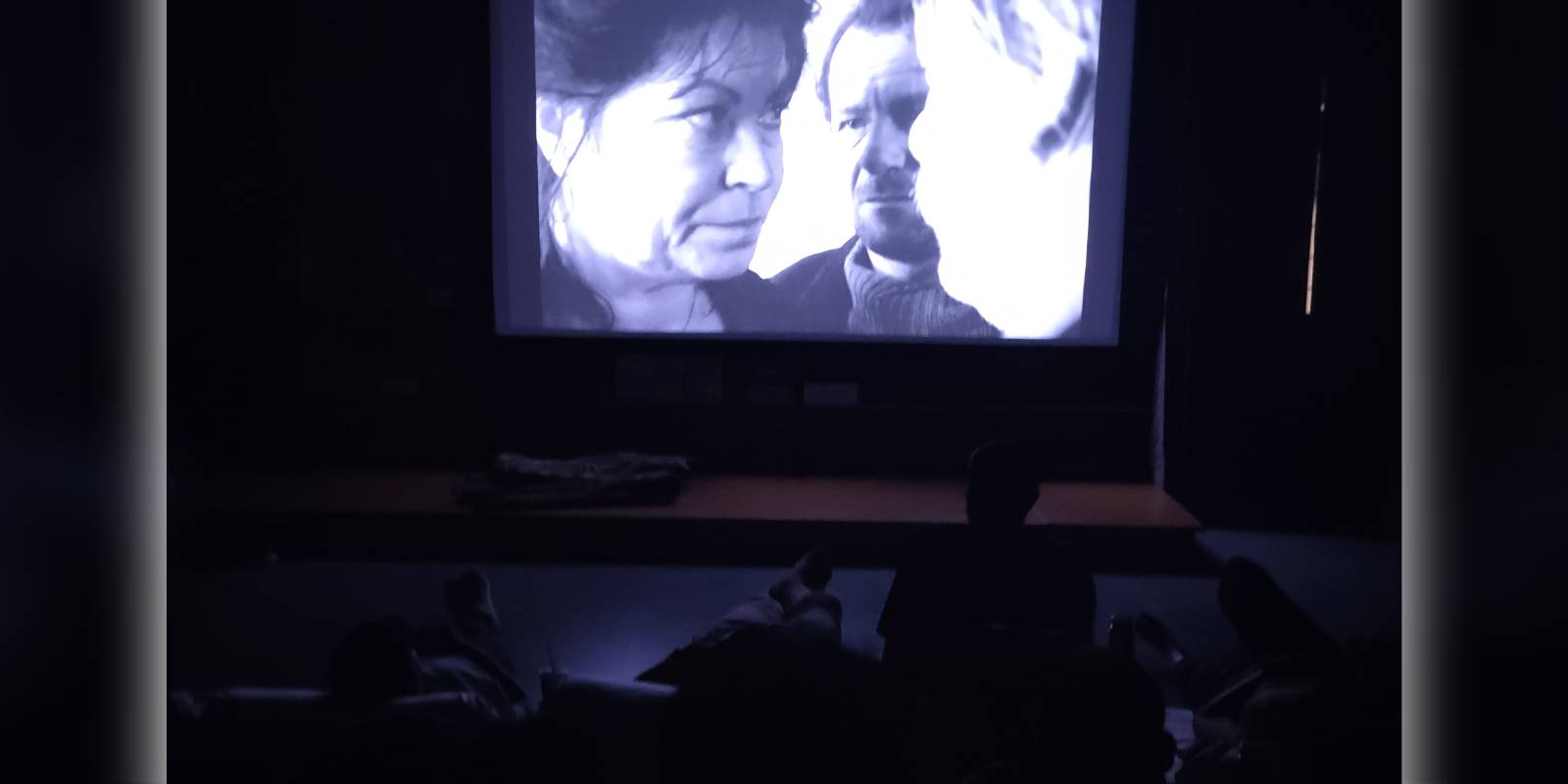Typically, a selected film movement is explored over a three-month period, giving viewers a comprehensive understanding of its essence and characteristics.
Published May 25, 2025 | 8:00 AM ⚊ Updated May 25, 2025 | 8:00 AM

A film being screened at the Parallel Cinema Club. (Supplied)
“Cinema is a way of expressing oneself, a means to reflect on your deepest philosophical and personal questions, and to document what you’re experiencing in life,” said Nikhil Waiker, founder of The Parallel Cinema Club. “Whatever we go through will, at some point, resonate with someone else, somewhere in the world.”
Following the pandemic and the rise of OTT platforms, cinema viewership has grown, with audiences no longer limiting themselves to specific languages or genres. Viewers are also showing a greater interest in understanding cinema, inspiring a new wave of aspiring filmmakers.
To further encourage aspiring filmmakers, and taking cinema to next level, the Parallel Cinema Club screens international films that align with various film movements and artistic expressions, and hosting engaging post-movie discussion sessions for cinephiles across Bengaluru.
The club started out with a bunch of friends who were interested in watching films, coming together every Sunday, at BV Jagadeesh Science Centre, Bengaluru. Soon many people started joining them, they eventually created a club called the Parallel Cinema Club.
While the club conducted online film screening sessions throughout the pandemic, they later resumed the offline screenings at Dialogues Café in JP Nagar. Since then, the club has been screening multiple films at multiple locations. The club also has its presence in Hyderabad and Mumbai.
The films screened here are curated based on specific film movements, influential directors, or even art movements. The club strives to introduce its audience to different shades of cinema, each focusing on different themes. Typically, a selected film movement is explored over a three-month period, giving viewers a comprehensive understanding of its essence and characteristics.
Waiker, speaking about the curation process said, “We pick films mostly that are outside of the copyright laws, films that are more than 60 years old, experimental films that are not really all that familiar and films from countries that are no longer existent, or its production houses does not exist. We also have a curation model set up around which people engage with films, bringing a progressive picture of what the film movement is like” said Waiker.
“During the curation we research about the films, particularly when it comes to film history. We start by compiling a comprehensive list of films from the selected time period or film movement, along with their respective directors. Club members then watch these films and vote on them.”
“Depending on the scope—be it a director’s body of work or an entire film movement—the number of films can range from 50 or 60 to as many as 600, 700, or even thousands. We carefully review all of them, create a shortlist, and finally curate a selection that becomes the official list presented to the public,” said Waiker.
The Parallel Cinema Club operates across three key verticals. The first is film writing, with the club publishing a magazine every six months. The second is a dedicated website that features blogs focused primarily on cinema. The third vertical is film screening sessions, held three days a week.
Additionally, the club supports aspiring filmmakers by offering them opportunities to showcase their work during these screenings. The club also collaborates with colleges by establishing MOUs and partnering with campus film societies to curate and conduct film screenings and related sessions
The club is highly popular among the youth on social media and is making a significant contribution to Bengaluru’s film screening culture.
“I believe there was a viewership for international films for a long enough time. Film societies have done a lot to introduce people to films around the globe, so, at least in Bangalore, the culture was already present. We are, in essence, continuing what was already laid down,” reiterated Waiker.
The club is also working towards its future goals. “We want to expand to have more MOUs with colleges and universities. And probably aid in production of films that we can pick out, important and relevant, and help build a collective. We also want to write critical pieces on cinema. Essentially doing whatever we are doing right now on a linearly expansive scale.” added Waiker.
Asked about a few international film recommendations for enthusiastic cinephiles, Waiker named the following, “The first is The Act of Seeing With One’s Own Eyes by Stan Brakhage, It’s as human as it can possibly get—he uses the camera to induce shock, to provoke fascination.”
“The second is At the First Breath. This falls under what are often called ‘transcendental films.’ Finally, Stray Dogs by Tsai Ming-liang—a beautiful example of slow cinema, a style that I believe works exceptionally well,” he added.
(Edited by Sumavarsha)
